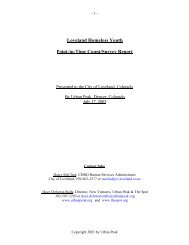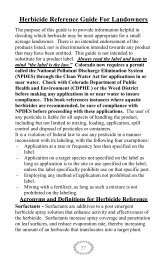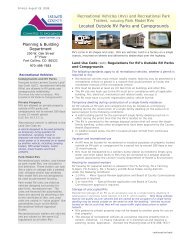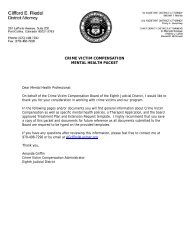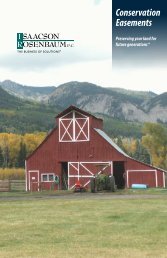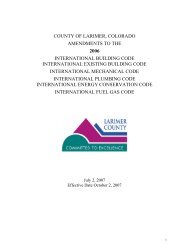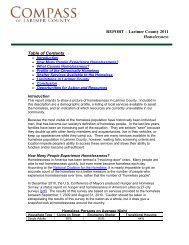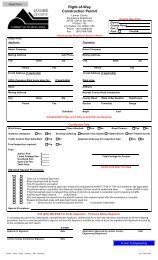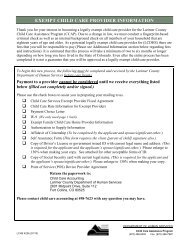LARIMER COUNTY RURAL AREA ROAD STANDARDS
LARIMER COUNTY RURAL AREA ROAD STANDARDS
LARIMER COUNTY RURAL AREA ROAD STANDARDS
Create successful ePaper yourself
Turn your PDF publications into a flip-book with our unique Google optimized e-Paper software.
Appendix F – Guidelines for Traffic Impact StudiesSection F.6 When A Full Traffic Impact Study is Required2. Define the following study horizons for the Full Traffic Impact Study: the existing(current), short range, and long range horizons.a. Existing Horizon: The intent of the existing or current horizon is to establish abaseline traffic condition.b. Short Range Horizon: The intent of the short term horizon is to evaluate theimmediate impacts of the project on the transportation system. The shortterm horizon year is defined as the point of full buildout of the proposeddevelopment or land use action. If the project is proposed to occur overmultiple phases, the impacts shall be analyzed at the point of full buildout ofeach phase. In no case shall the short range horizon exceed five (5) years.c. Long Range Horizon: The intent of the long range planning horizon is toevaluate the impacts of the fully developed project in the context of regionaltransportation planning efforts. The long range impacts are analyzed as ofthe end of the current Regional Transportation Plan 20-year planning horizon.If no long range analysis year is established, the long range horizon shouldbe twenty years after the existing horizon.3. Identify the existing, committed (approved), and proposed land uses in the trafficimpact area.4. Prepare a map of transportation facilities within the traffic impact area for boththe short range and long range planning horizons including, but not limited to, allexisting and proposed roads, access points, and intersections. Includecommitted (funded) improvements by the County or by previously approveddevelopments or land use actions. This map should be used to graphicallydisplay average daily and peak hour traffic volumes for the existing, short range,and long range planning horizons.5. Describe existing traffic conditions within the traffic impact area, includingaverage daily traffic volumes for roadways and a.m. and p.m. peak hour volumesat intersections. These volumes must be based on traffic counts no more thantwo years old. Determine a.m. and p.m. peak hour levels of service forintersections.6. For short range traffic projections, provide references, calculations and datasources for all trip generation estimates, as follows. Use and document thefollowing procedures for all trip generation estimates:a. Obtain trip generation estimates or equations from the Institute ofTransportation Engineers (ITE), Trip Generation Manual. Where several tripgeneration rates are listed in ITE Trip Generation Manual, use the highest tripgeneration rate or provide sufficient justification for a lower rate.b. Where no published trip generation rates are available, the Engineer willconsider fully documented traffic volume counts for similar existing uses.c. Trip reduction factors may be applied under the following conditions:1) Basic requirements. Trip reduction factors may be applied to the full tripgeneration estimates derived from ITE rates or equations, only afterunderlying assumptions of the full ITE rates have been examined. All tripreduction factors must be fully quantified and justified in the Full TrafficImpact Study or its appendix.2) Reassigning generated trips to passby factor. Passby factor denotes tripsto the proposed development that currently exist as background mainlineLarimer County Rural Area Road Standards Page F-6October 22, 2007



